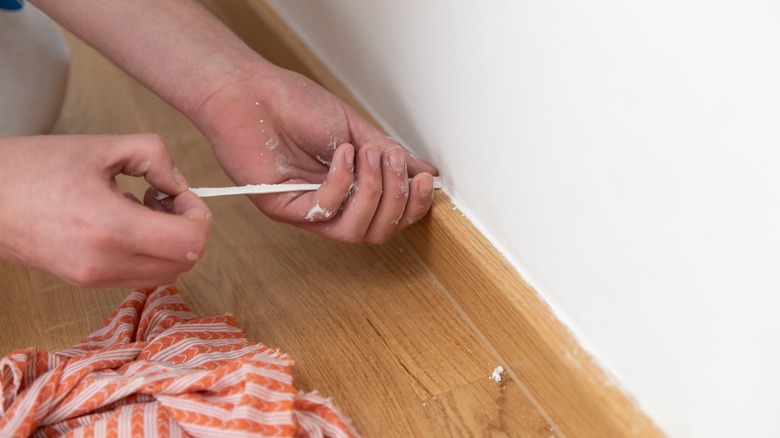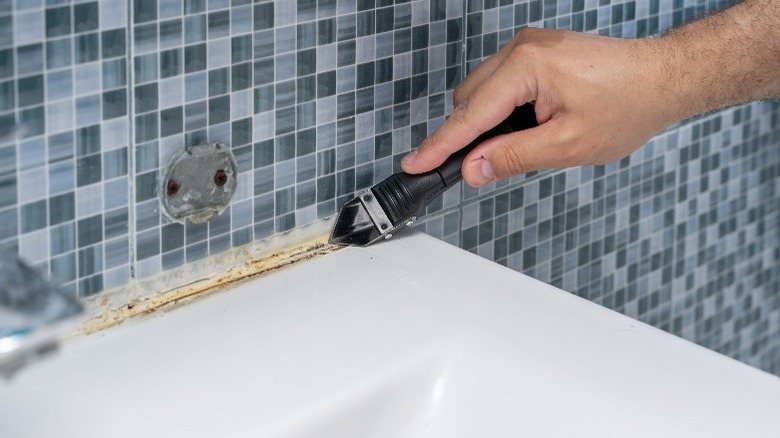The Ingredient You'll Want To Have On Hand When Removing Silicone Caulk
Silicone caulk is a versatile sealant that we can use to plug virtually every gap and seal, like the base of bathroom fixtures, kitchen worktops, and drafty doors and windows. However, if you've ever had the experience of removing old silicone caulk, you know how hard it is to get rid of this stubborn substance — hence the question, "Is there anything I can use to soften silicone caulk?" Fortunately, a house staple like vinegar may be all you need for the job.
It is important to note that vinegar cannot completely remove silicone caulk. The acetic acid content of vinegar softens the silicone caulk, making it easier to remove. Silicones are pretty durable and resistant to acids. While some say that acetic acid is too weak of an acid to degrade or cause any change in silicones, other users attest to its effectiveness. So, if you need to remove some silicone caulk, you may want to try using vinegar, particularly white vinegar, to soften stubborn caulk before using tools to remove them. Some also resort to the same ingredient when cleaning moldy silicone caulks.
How to use vinegar to help remove silicone caulk
Before using vinegar to remove caulking, you must check if the ingredient is safe to use on the surface you're working on. For example, ceramic tiles and vinegar don't mix. This means that you might need to rely on other alternatives to remove caulk from your surfaces. You might also want to prepare a kitchen towel that you can roll and soak in vinegar for a more targeted application once you apply vinegar. This ensures that the vinegar maintains direct contact with the caulk, enhancing its softening effect. As part of the preparation, heat the caulk using a hairdryer or heat gun. Direct heat can soften silicone and can even melt it. Carefully heat the entire length of the caulk. Be mindful of any surrounding materials like plastic or acrylic, as these can melt under high heat.
Once the caulk has expanded, apply vinegar directly on the caulk or pour it on a rolled kitchen towel and press it along the silicone caulk line. Let it sit for about 15 minutes until it has fully soaked the exposed cracks. Then, poke through the edge of the caulk using a knife and cut as closely to the substrate as possible. If the caulk is loose enough, use needle-nose pliers to slowly lift and peel the bead off as a solid piece. Note that it's crucial to remove the entire caulk and leave no residue, which will prevent the new caulk from adhering.

